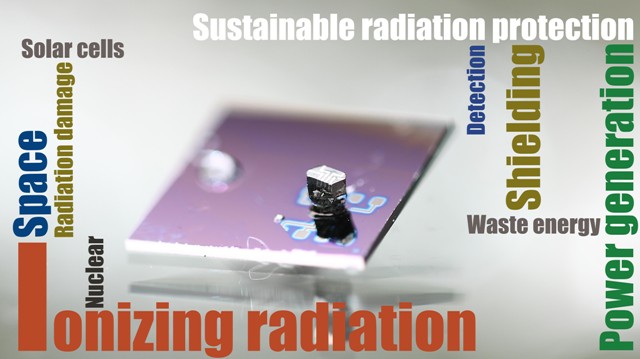Nov 12 2015
EPFL scientists are developing a material that can turn X-rays, as well as light, into electricity. The material can be used on photovoltaics used in space exploration.
 Copyright László Forró/EPFL
Copyright László Forró/EPFL
Converting light into electricity is one of the key strategies for renewable energy, and even space exploration. But in space, photovoltaic cells can be damaged because of exposure to X-ray, gamma-ray, and particle radiation. The way to overcome this challenge is to develop materials that not only withstand but also harvest such higher-energy radiation and turn it into electricity. EPFL scientists have now shown that a material based on solar-panel perovskites can be used to harvest electricity with high efficiency from X-rays and particles in space. The work is published in The Journal of Physical Chemistry C.
In space, without the filtering of Earth’s atmosphere, objects are bombarded with increased photon-energies in the form of X-rays, gamma-rays, and charged particles, all of which cause intense radiation damage. It would be ideal not only to withstand, but to actually harvest that radiation for electrical energy.
The lab of László Forró at EPFL, led by postdocs Bálint Náfrádi and Endre Horváth, have discovered that methylammonium lead iodide (CH3NH3PbI3) can fulfill this purpose. This is a material already used in conventional perovskite solar cells, where it harvests visible-light photons that are then converted into electricity.
The researchers fabricated single crystals of methylammonium lead iodide and tested them on photocurrent generation while irradiating them with X-rays. They found 75% charge-collection efficiency in millimeter-sized crystals. This high-efficiency current conversion for X-ray radiation also matched the material’s high X-ray absorption coefficient.
In terms of damage, the material’s performance decreased less than 20% when hit with X-ray doses similar to those in space. “This represents very promising stability for high-radiation doses,” says Bálint Náfrádi.
Combined, these features can lead to fabricating photovoltaic cells that can harvest visible, X-ray, and even gamma-ray photons. Such technology can have far-reaching advantages for space exploration, as well as converting waste radiation in nuclear powerplants.
This work included contribution from the Institute of Nuclear Techniques of the Budapest University of Technology and Economics. The project was funded by the Swiss National Science Foundation and the European Research Council.
Reference
Náfrádi B, Náfrádi G, Forró L, Horváth E. Methylammonium Lead Iodide for Efficient X-ray Energy Conversion. J. Phys. Chem. C, 16 October 2015. DOI: 10.1021/acs.jpcc.5b07876.